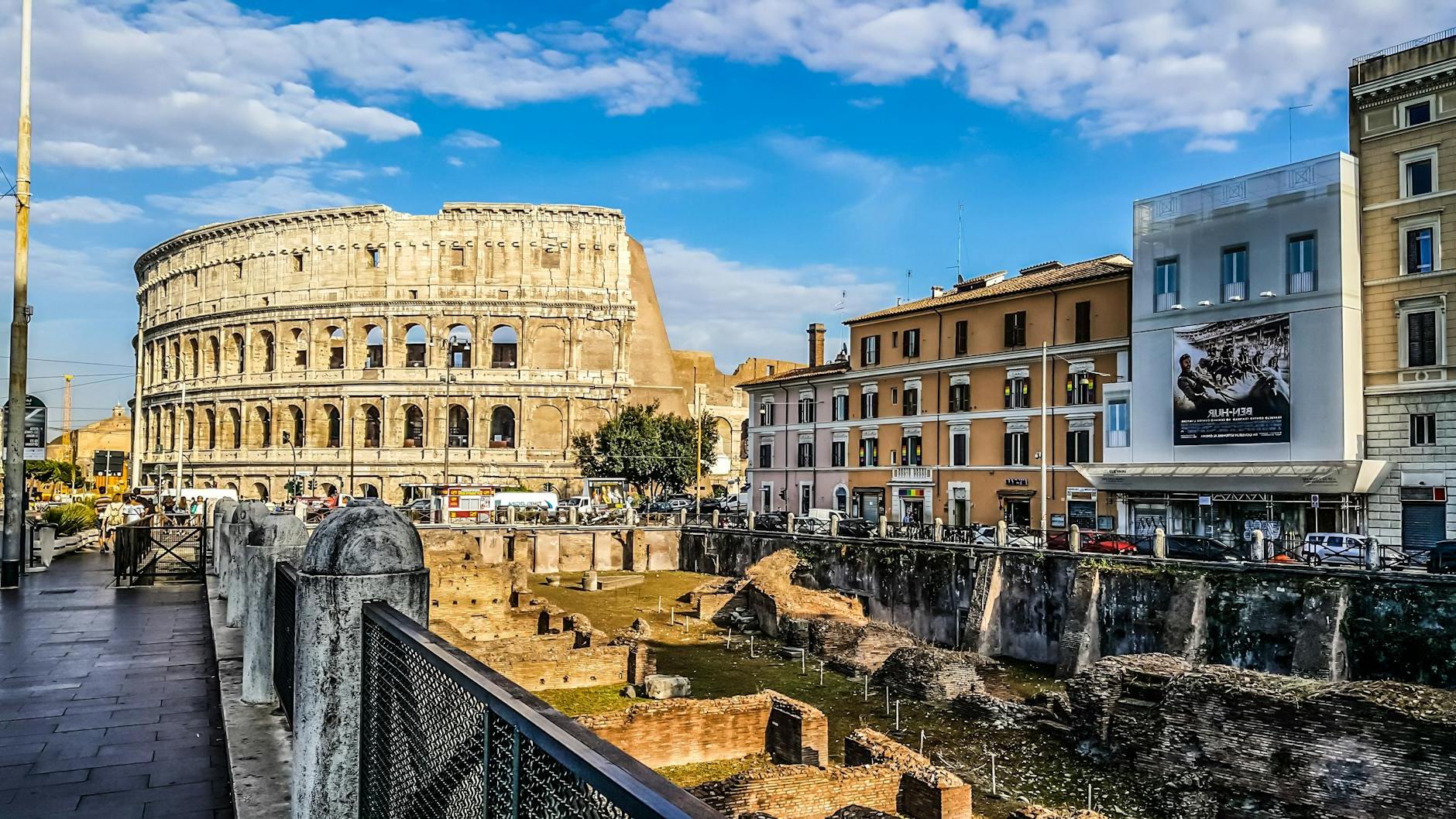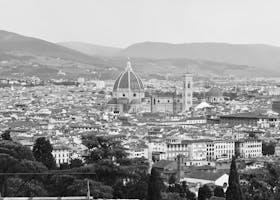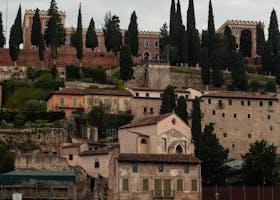Explore Eternal City: Top 10 Must-Visit Spots in Rome, Italy
Posted on June 3, 2024 • 12 minutes • 2403 words
Table of contents
Rome, the Eternal City, beckons travelers with its breathtaking blend of glorious history, captivating art, and vibrant street life. The best time to bask in Rome’s beauty is from April to June and from late September to October, when the weather is as pleasant as the city’s ambiance. These months see Rome at its most splendid, with perfect temperatures allowing for endless exploration. However, Rome doesn’t hibernate for the rest of the year; this city promises an adventure at every turn, no matter the season. Whether you’re wandering through the historical heart in the balmy summer or sipping on a hot cappuccino in a cozy café during the cooler months, Rome ensures your visit is unforgettable. For those ready to experience the sheer majesty of this ancient city, here are the 10 must-see places in Rome that offer a glimpse into its soul, ensuring your journey is nothing short of extraordinary.
10 best things to see in Rome
10. Baths of Caracalla
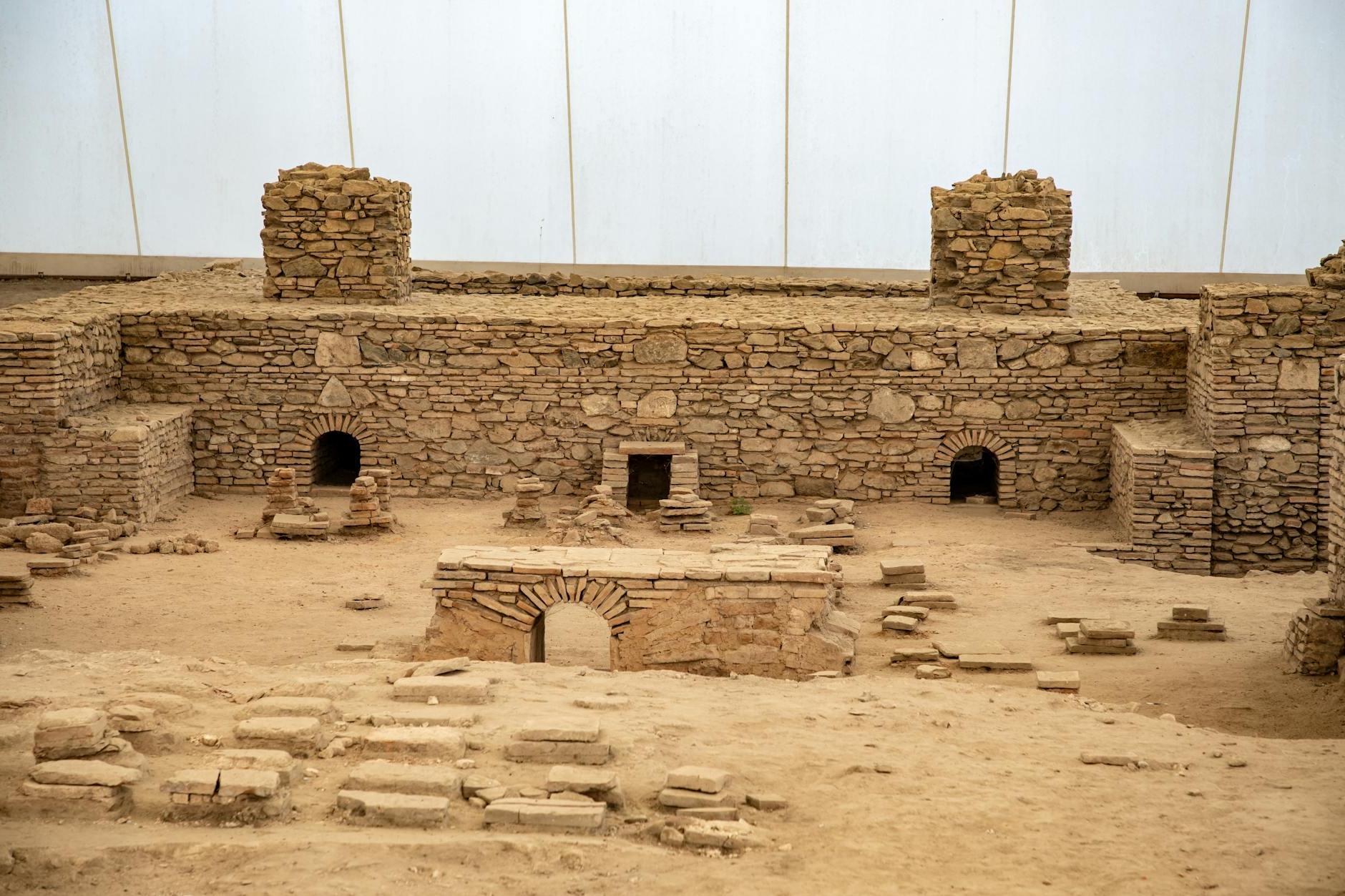
When you’re in Rome, don’t miss the chance to step back into ancient times with a visit to the Baths of Caracalla. These impressive ruins are not just a sight to behold; they give you a fascinating glimpse into the daily life of ancient Romans. The Baths of Caracalla were once a grand complex of leisure, featuring not just pools but also libraries, shops, and gardens. Today, you can roam through the massive structures and imagine the grandeur of the past. To get to the Baths of Caracalla, taking the metro is quite convenient. Hop on to Line B and get off at the Circo Massimo stop. From there, it’s a short walk to this ancient wonder. Pay special attention to the mosaic floors and the massive walls that have withstood the test of time – they’re truly a testament to ancient engineering and artistry.
9. Appian Way

If you’re headed to Rome, make sure to carve out some time for the Appian Way, or Via Appia Antica, as it’s known in Italy. This ancient road has a history that stretches back to 312 BC, offering a unique glimpse into the past. Here, you’ll stroll the same path that Roman soldiers and ancient pilgrims once tread. Getting there is a breeze; simply take the Archeobus from the city center, or hop on the local 118 or 218 bus which will get you close to the main attractions. Once there, pay special attention to the imposing mausoleums, ancient catacombs, and well-preserved Roman ruins scattered along the roadside. It’s not only a trip through Rome’s storied past but also a peaceful escape from the city’s bustling present. Remember to wear comfortable walking shoes and bring a camera to capture the historical monuments and the natural beauty that lines this legendary path.
8. Piazza Navona
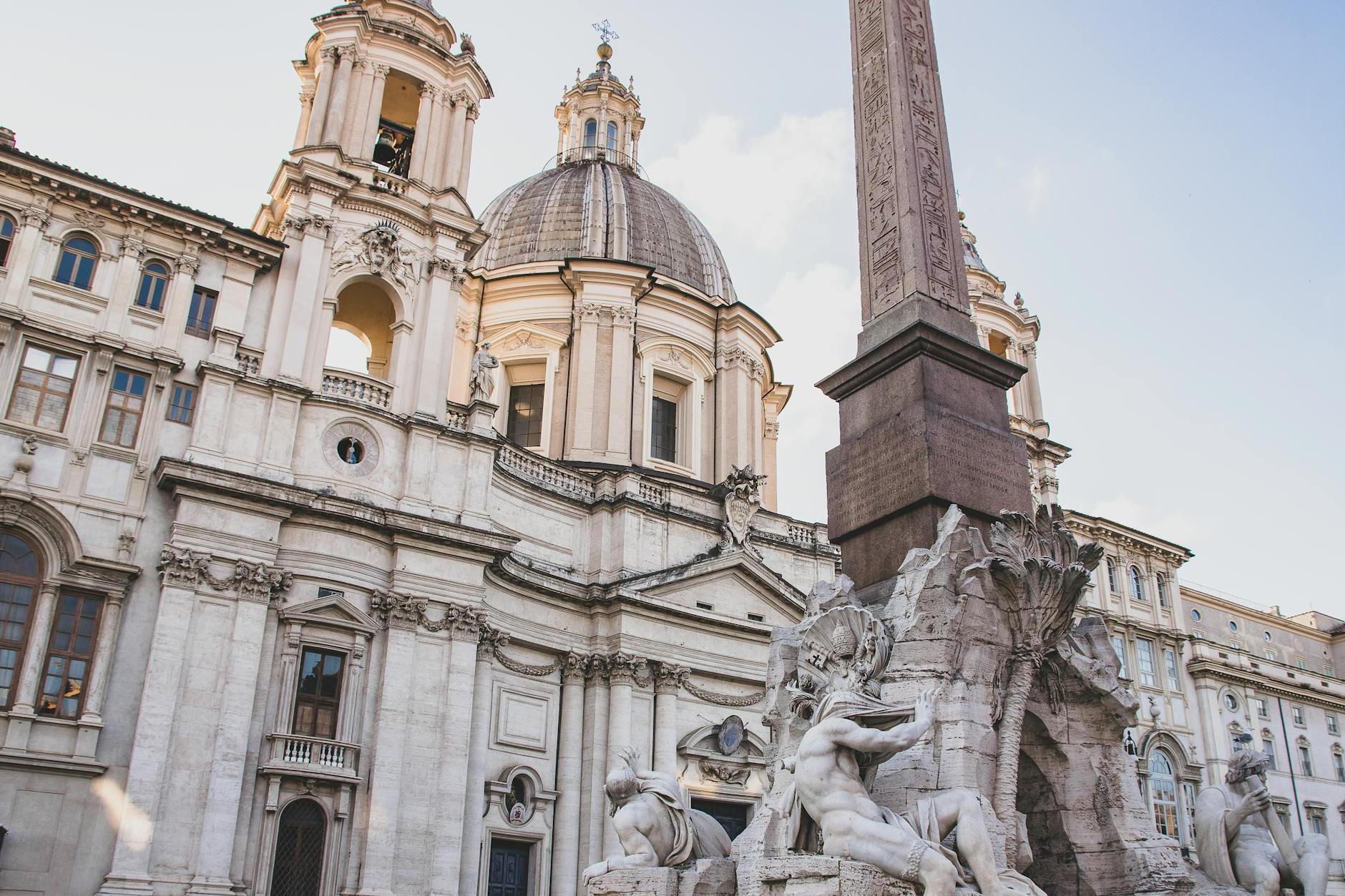
When you’re in Rome, make Piazza Navona a must-visit spot on your itinerary. This stunning square is not just a feast for the eyes with its baroque architecture, it’s also steeped in history, originally built on the site of a 1st-century stadium. Here, you’ll find three magnificent fountains, with the Fountain of the Four Rivers, designed by Bernini, being the crown jewel. To get there, simply hop on a bus or take the metro to the Spagna station and enjoy a short walk through Rome’s picturesque streets. As you explore, don’t forget to look out for the street artists and performers that bring vibrant life to the square. And, make sure to treat yourself to a gelato from one of the nearby shops as you take in the bustling atmosphere of this iconic Roman landmark.
7. Roman Forum
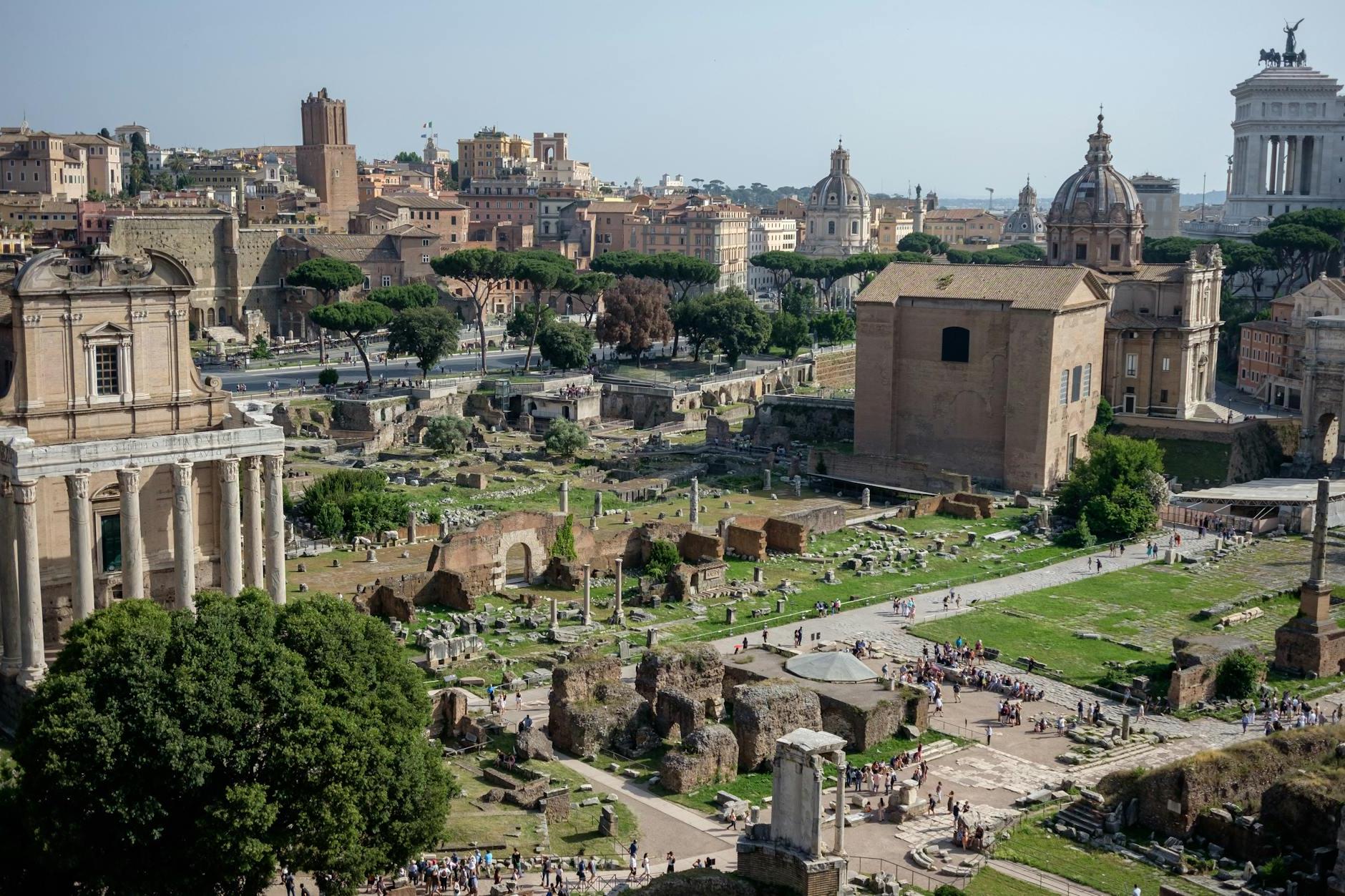
When in Rome, a visit to the Roman Forum is an absolute must. This ancient site, nestled in the heart of the city, is like walking through a live chapter of history. Brimming with ruins of important government buildings, temples, and vibrant public spaces, it tells the story of the Roman Empire’s grandeur. To get there, the easiest way is to take the metro and alight at the Colosseo station on line B. From there, the Roman Forum is just a short walk away. As you explore, pay special attention to the Temple of Saturn, the Arch of Titus, and the House of the Vestals. These iconic landmarks offer a glimpse into the architectural brilliance and cultural depth of ancient Rome, making your visit an unforgettable journey back in time.
6. Pantheon
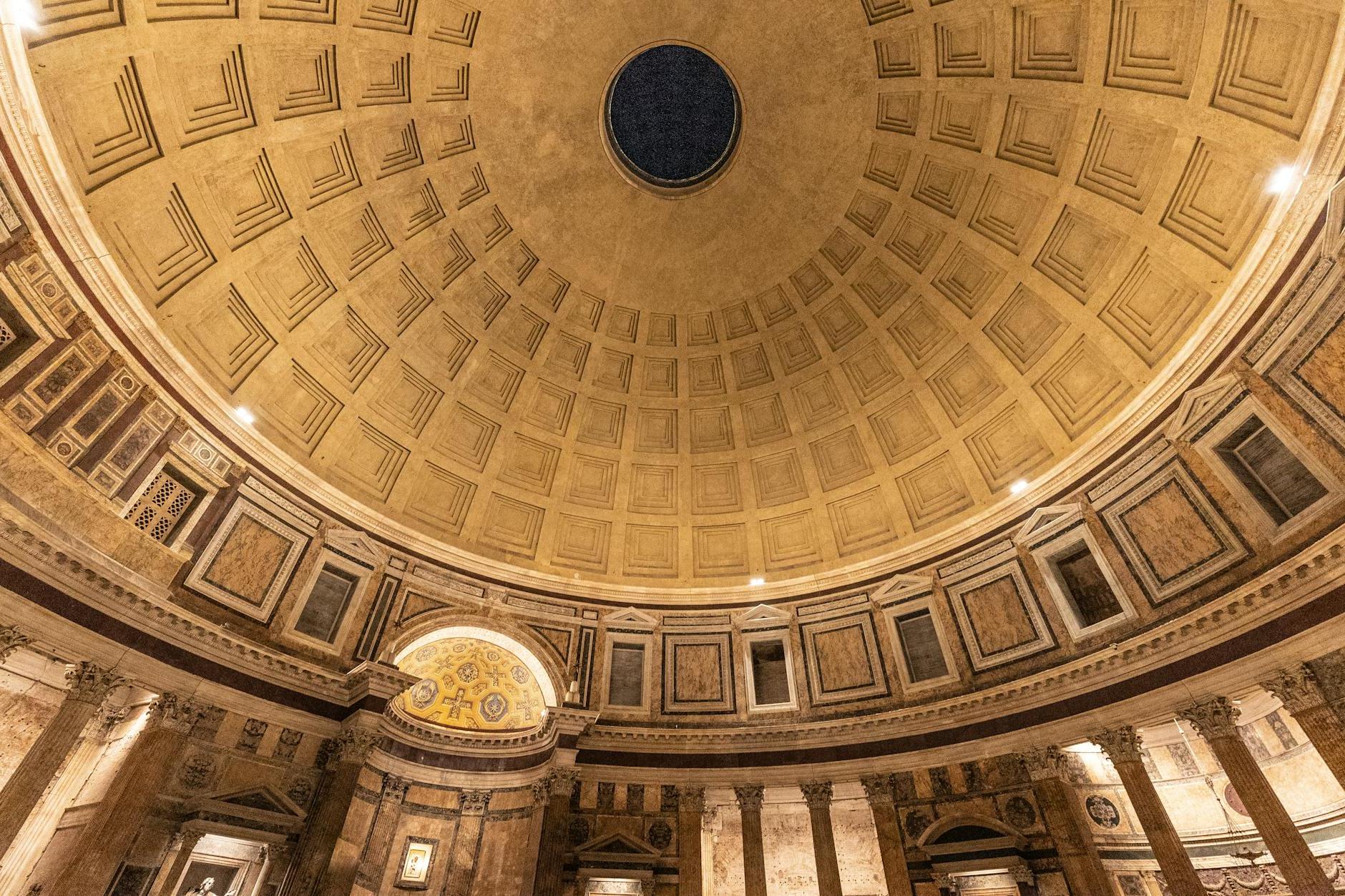
Visiting the Pantheon in Rome is like stepping back into ancient history. This architectural marvel, originally built as a Roman temple and now serving as a church, offers a unique glimpse into the past with its grandeur and beauty. To get there, you can take a bus or metro to the Piazza della Rotonda where it’s located. Once inside, make sure you look up at the dome; it’s the world’s largest unreinforced concrete dome and its oculus - the opening at the top - is a sight to behold. The Pantheon also houses the tombs of renowned figures like the artist Raphael, making it not just an architectural wonder, but also a place of profound historical significance. Whether you’re a history buff or not, the Pantheon’s awe-inspiring architecture and rich past make it a must-visit when in Rome.
5. Spanish Steps
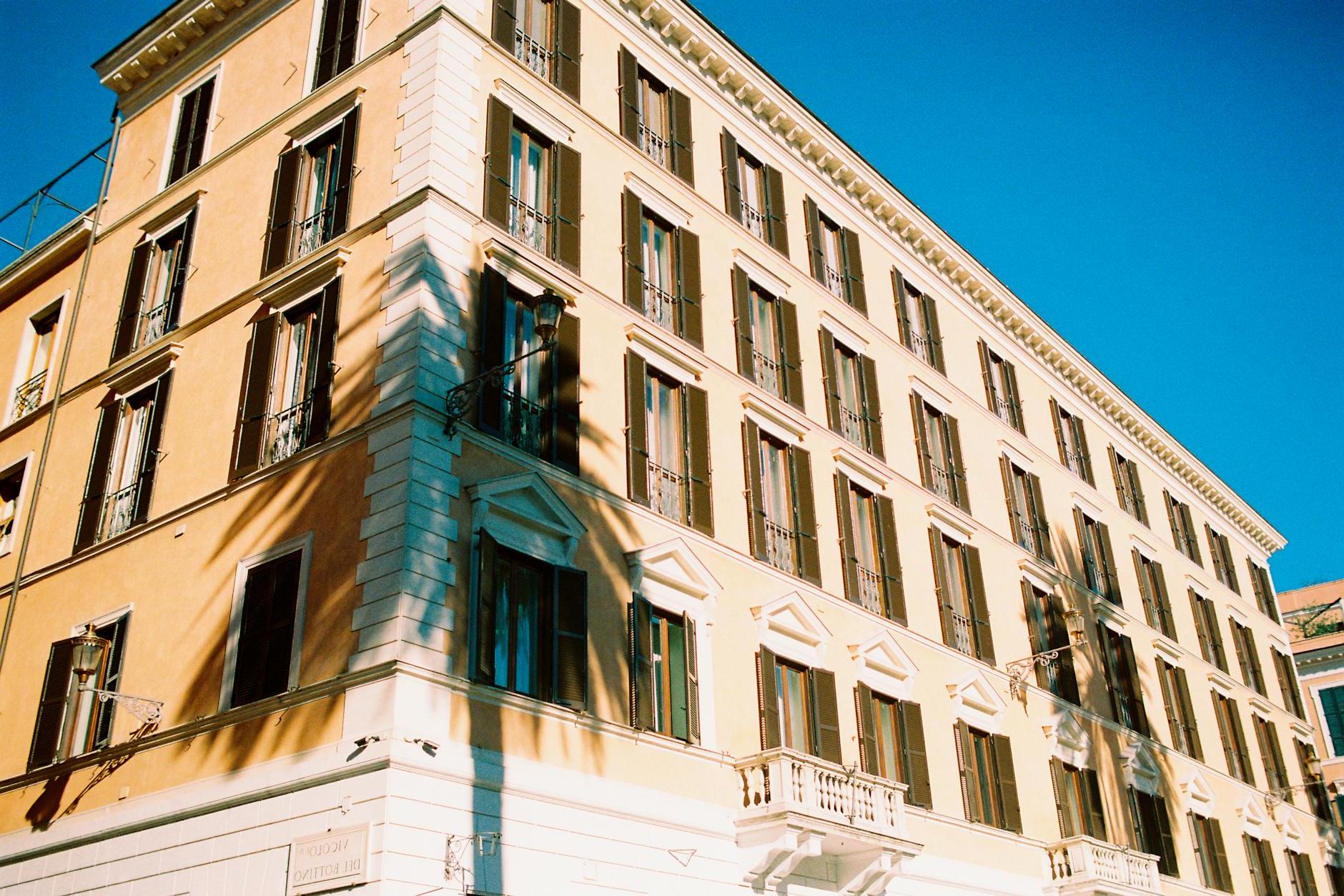
When you’re exploring Rome, don’t miss out on visiting the Spanish Steps, a truly iconic landmark. This stunning staircase, with its elegant Baroque design, connects the Piazza di Spagna at the base with the Trinità dei Monti church at the top. The steps are not only a beautiful spot for photos but also a vibrant meeting place where you can feel the pulse of the city. To get there, you can easily take the Metro and get off at the “Spagna” station. Once there, take a moment to admire the Fontana della Barcaccia, a charming fountain by Pietro Bernini, located at the foot of the steps. In spring, the steps are adorned with vibrant flowers, adding to their beauty. The Spanish Steps are more than just stairs; they are a piece of Rome’s living history and offer a glimpse into the artistic and cultural life of the city. Remember, sitting on the steps is not allowed, so be sure to respect the local rules and enjoy the view from a nearby spot.
4. Trevi Fountain
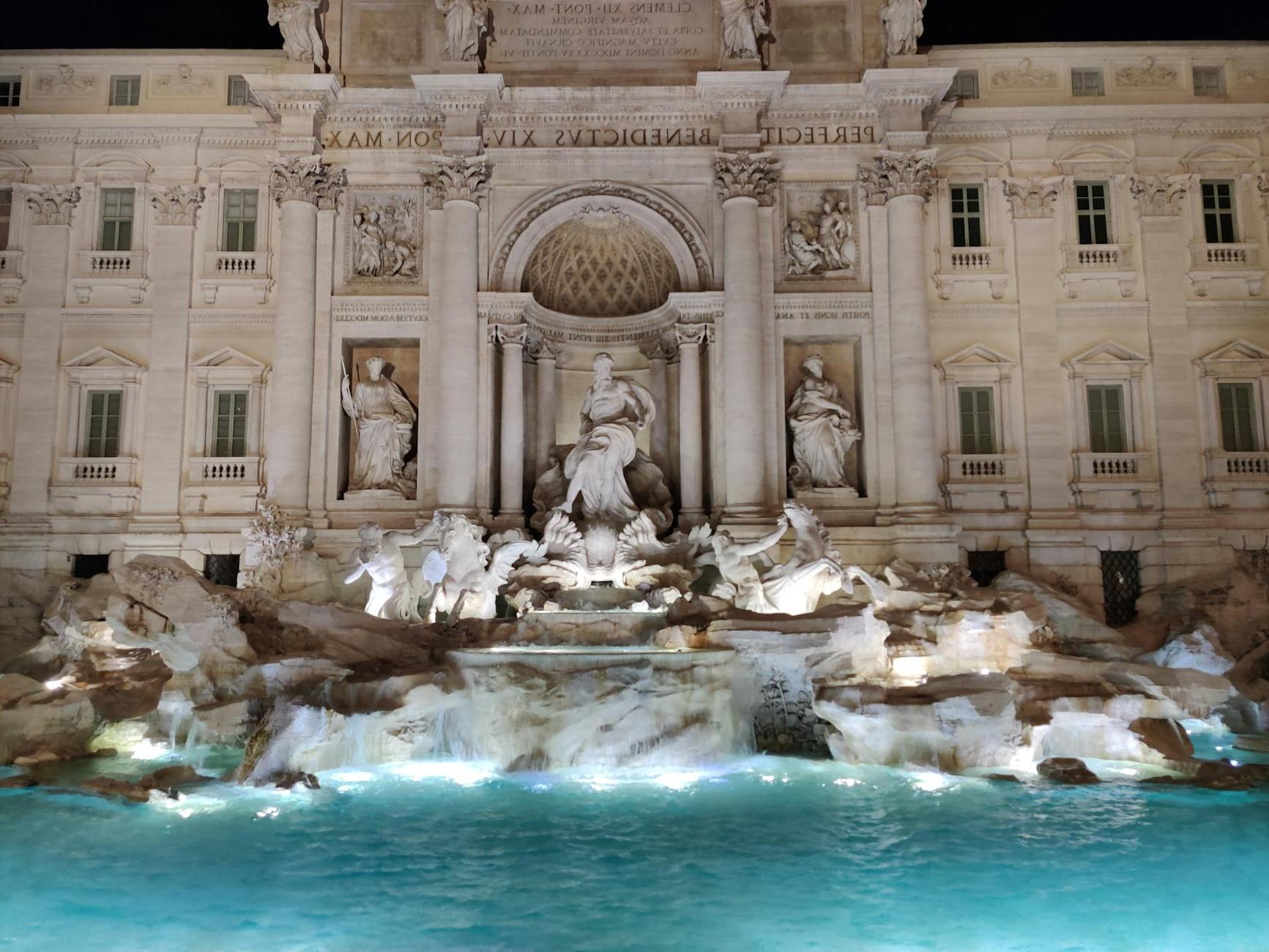
If you’re planning a trip to Rome, adding the Trevi Fountain to your must-visit list is a no-brainer. This iconic masterpiece is not only one of Italy’s most famous landmarks but also a stunning example of Baroque art. The magic of the Trevi Fountain goes beyond its visual appeal; there’s a charming tradition that if you throw a coin over your shoulder into the fountain, you’re guaranteed a return trip to Rome. To reach this enchanting spot, you can easily get there by taking the Metro and alighting at the Barberini Station; from there, it’s just a short walk. While you’re there, make sure to take in the intricate details of the sculptures, especially Oceanus and the Tritons. Remember, it’s incredibly popular, so visiting early in the morning or late in the evening can help you avoid the crowds and have a more intimate experience with this piece of Roman history.
3. Vatican Museums
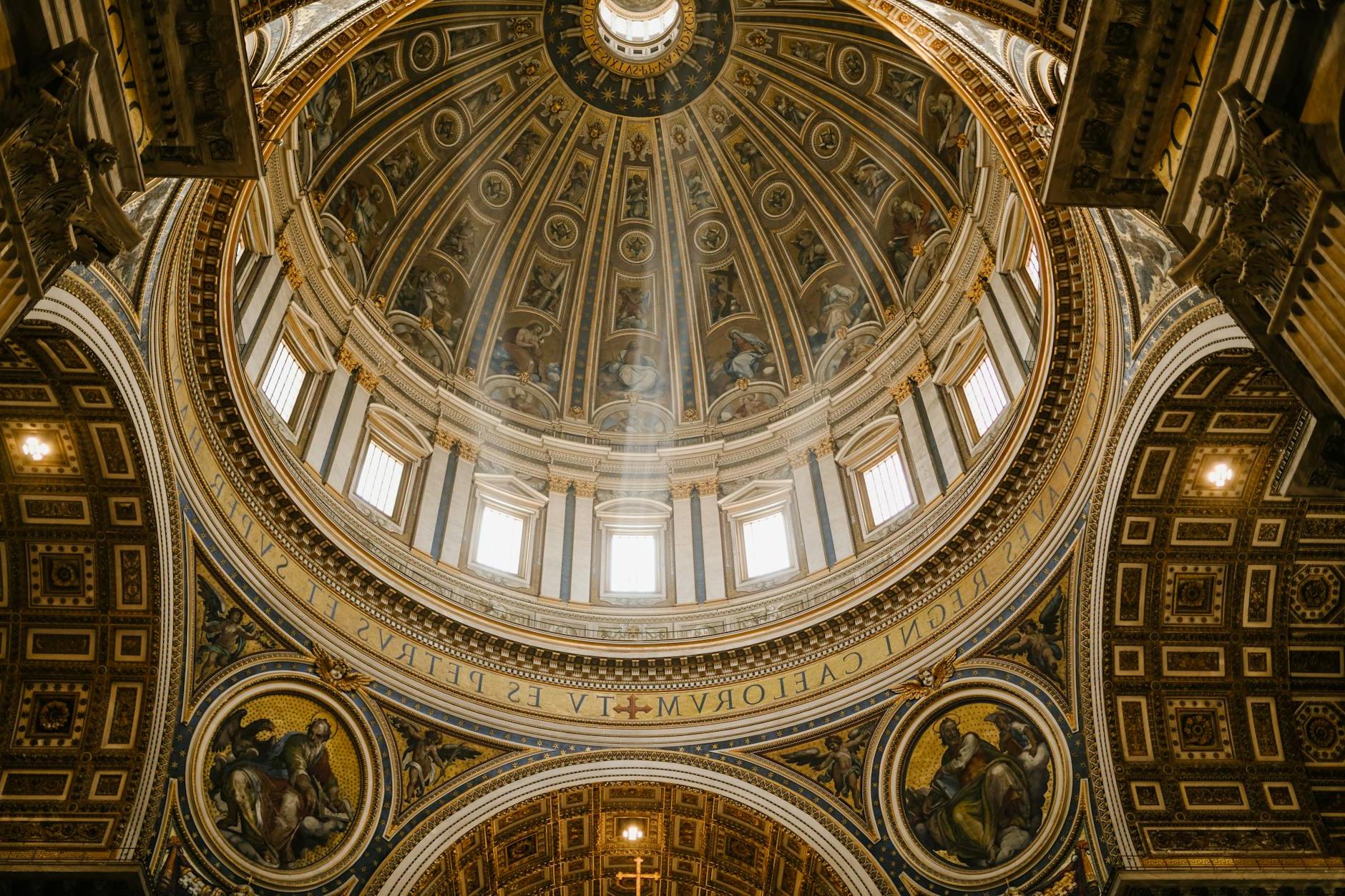
When visiting Rome, the Vatican Museums should definitely be on your to-see list. This amazing collection of art and history, tucked within the heart of Vatican City, is like stepping into another world. From the stunning Sistine Chapel, with its ceiling painted by Michelangelo, to the Raphael Rooms and the spiral staircase that seems straight out of a fairy tale, there’s beauty and history at every turn. Getting there is easy: take the Rome Metro and get off at the Ottaviano-S. Pietro-Musei Vaticani station. From there, it’s just a short walk. Remember to book your tickets in advance, especially during peak tourist seasons, to avoid long lines. Wear comfortable shoes, as there’s a lot to explore, and be ready to be awe-struck by one of the world’s most incredible collections of art and artifacts.
2. St. Peter’s Basilica
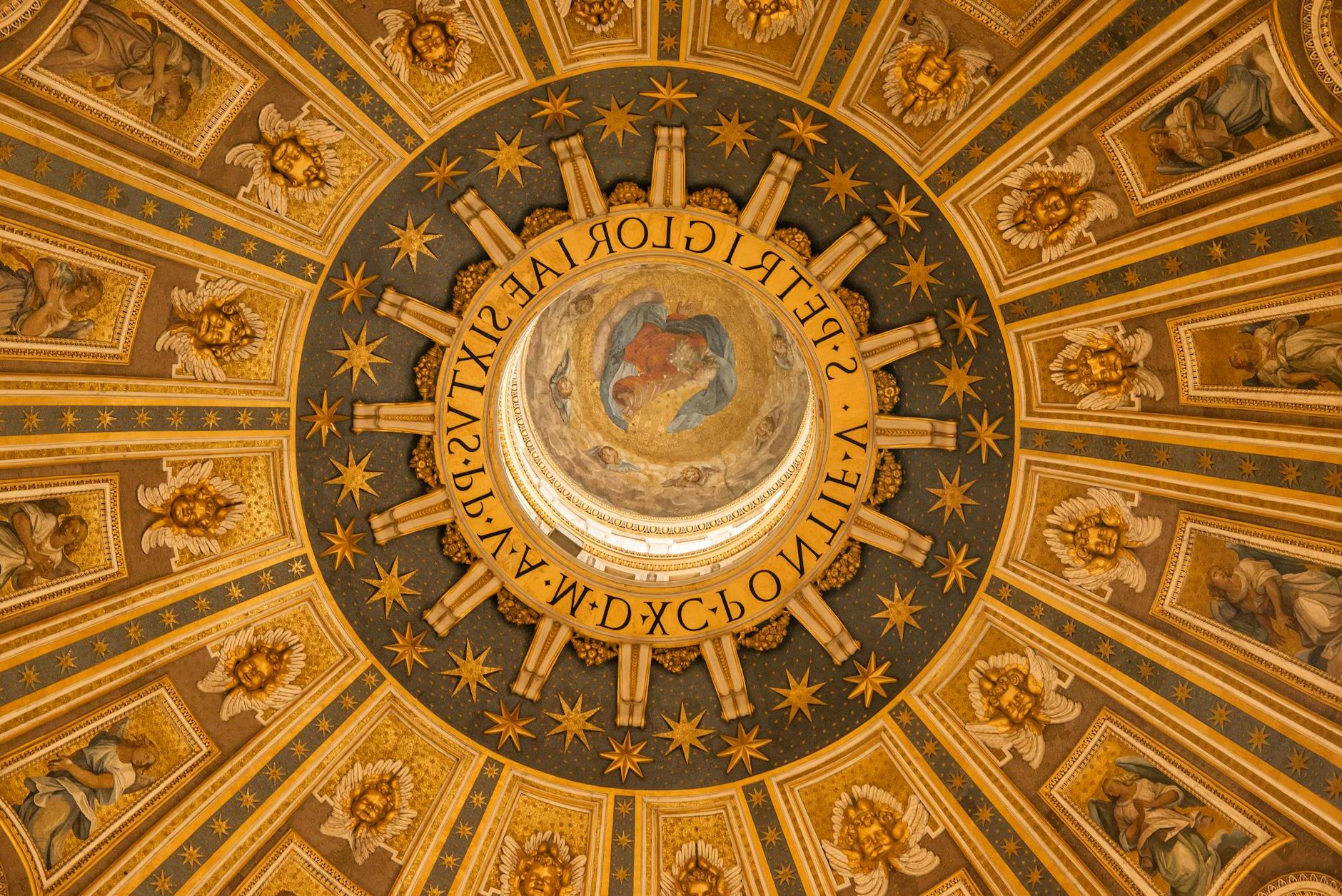
When in Rome, a visit to St. Peter’s Basilica stands as an essential experience, capturing the essence of spiritual grandeur and architectural wonder. Standing at the heart of Vatican City, this iconic church is not just a beacon for the Catholic faith but also a treasure trove of art and history. To get there, simply take the Metro line A and alight at Ottaviano station; from there, it’s a short walk to this majestic basilica. As you step inside, prepare to be awestruck by the stunning masterpiece that is Michelangelo’s Pietà, the awe-inspiring Baldachin by Bernini over the main altar, and the breathtaking view from the dome after a climb of over 500 steps. Remember, dress respectfully (covering shoulders and knees), and arrive early to avoid the long lines. St. Peter’s Basilica is not just a church; it’s a journey through history, art, and spirituality, making it a must-visit when you’re in Rome.
1. Colosseum
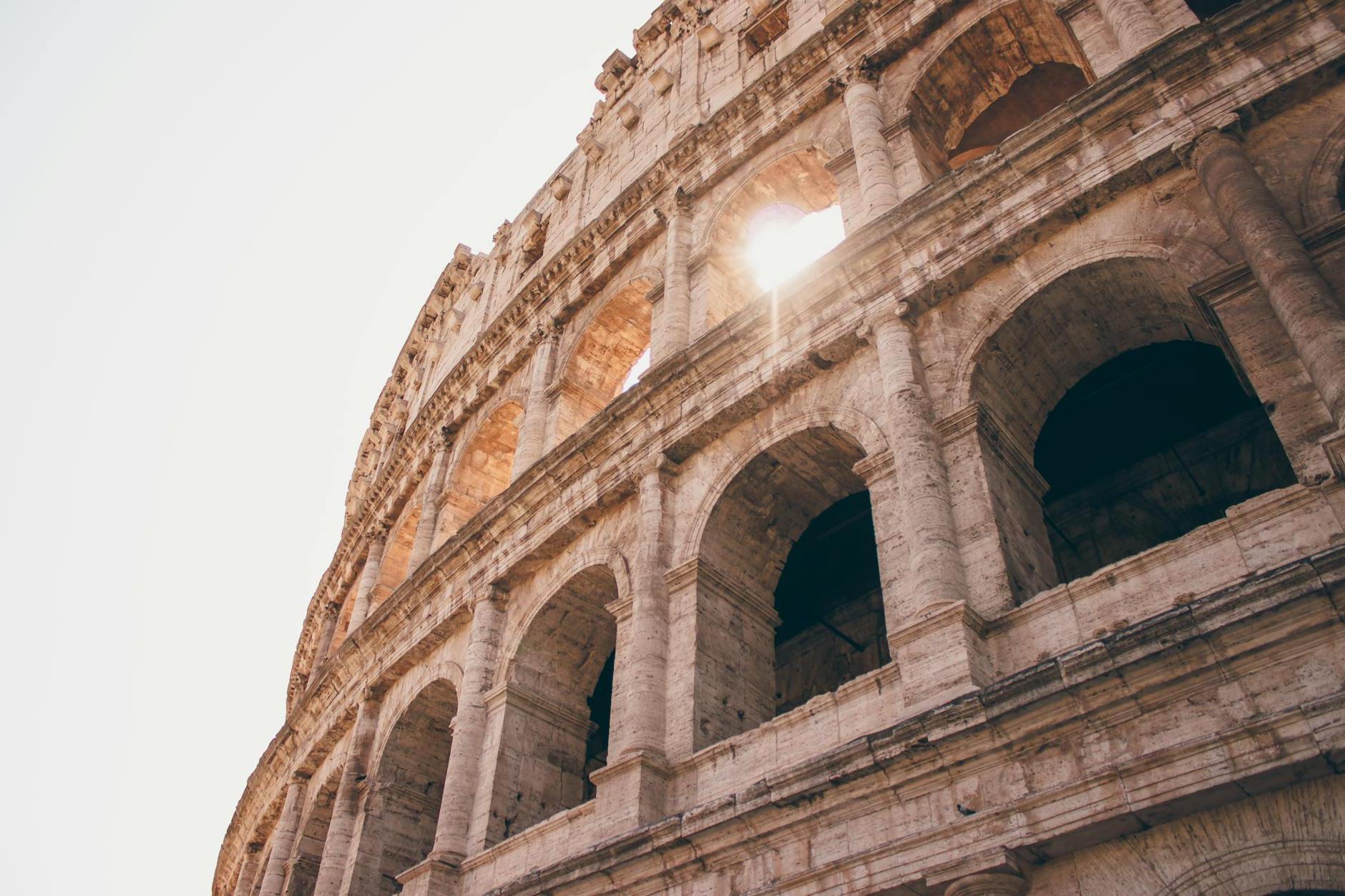
When in Rome, a visit to the Colosseum is a must. It’s not just an iconic symbol of ancient Roman architecture and engineering, but it also offers a window into the past, allowing you to imagine the gladiatorial battles and spectacles that once entertained tens of thousands of spectators. To get there, the easiest way is by metro. Simply board the metro line B and disembark at the “Colosseo” station. The towering structure will be right in front of you upon exiting. While exploring this magnificent amphitheater, pay special attention to the intricate underground network called the Hypogeum, where gladiators and animals waited their turn to fight. Also, don’t miss out on climbing up to the upper tiers for a breathtaking view of the arena and the surrounding Roman landscape. Visiting the Colosseum not only offers a glimpse into the ancient world but also reminds us of the incredible history that shaped modern civilization.
Frequently Asked Questions
1. What is the best time of the year to visit Rome?
The best time of the year to visit Rome is during the spring (April to June) and fall (September and October) months. During these periods, the weather in Rome is most pleasant, with mild temperatures making exploring the city’s incredible historic sites like the Colosseum and the Vatican much more enjoyable. Crowds are usually smaller than in the peak summer months, allowing for a more relaxed experience. If you’re looking to save some money and don’t mind cooler weather or a bit of rain, consider visiting during the winter months (November to March). You’ll find that accommodations are often cheaper, and while some sites might have reduced hours, the city is less crowded, offering a unique perspective of its timeless beauty.
2. Should I rent a car in Rome?
Deciding whether to rent a car in Rome largely depends on your travel plans and comfort level navigating in busy, unfamiliar places. Rome’s roads can be very congested, and the city is known for its challenging traffic conditions. Additionally, finding parking can be quite a headache, especially in the city center where parking spaces are scarce and can be expensive. On the other hand, Rome has a comprehensive public transport system, including buses, trams, and the metro, which can be a convenient and cost-effective way to explore the city. Taxis are also a viable option, offering a stress-free way to get around, although they can be pricier than public transport. Given these considerations, if your main focus is exploring Rome’s historic center and other areas well-served by public transport, you might find that you don’t need to rent a car at all.
3. What are different ways to get to Rome?
Traveling to Rome, the enchanting capital of Italy, can be an exciting adventure, and there are several convenient ways to get there. If you’re flying, two main airports serve the city: Leonardo da Vinci-Fiumicino Airport, the primary international hub located about 30 minutes from the city center, and Ciampino Airport, primarily for budget airlines, situated closer to Rome. Once you land, you can hop on a train, take a shuttle bus, or grab a taxi to reach the heart of Rome. For those who prefer the scenic route, traveling by train is a fantastic option. Italy’s efficient rail network connects Rome with major cities like Milan, Florence, and Naples, offering both high-speed and slower regional train services. Buses are another affordable choice, with numerous lines linking Rome to various Italian and European cities. If you enjoy driving, the well-maintained Italian highways (autostrade) make driving to Rome a breeze from any major Italian city, offering flexibility and a chance to explore the picturesque countryside at your own pace. However, remember that traffic can be heavy, and parking in Rome is known to be challenging. Regardless of how you choose to get there, Rome’s historic allure and vibrant streets await your discovery.
4. Are there things to do with children in Rome?
Absolutely, Rome is a playground for children, offering a mix of fun activities and educational experiences. Imagine stepping back in time at the Colosseum, where young gladiators can explore ancient ruins and learn about Rome’s mighty history. The city’s numerous parks, like Villa Borghese, provide plenty of space for kids to run around and enjoy puppet shows or rent bikes. Don’t miss the chance to cool off at the Explora, Rome’s children’s museum designed specifically for curious young minds to engage in interactive play and learning. The Bioparco di Roma, a zoo that focuses on conservation, is home to over 200 species and is another must-visit for animal-loving families. And, of course, the city’s famous gelaterias will be a hit with children, offering a tasty treat after a day of adventure. Rome beautifully blends education, entertainment, and excitement, ensuring that little ones are always engaged.
5. Is Rome safe to travel to?
Yes, Rome is generally safe to travel to. Like any major city, it’s important to exercise a bit of caution, especially in tourist-heavy and crowded areas. Keeping your valuables out of sight and being mindful of your surroundings can go a long way in ensuring your trip is worry-free. Also, it’s a good idea to familiarize yourself with local emergency contact information just in case you need it during your stay. By taking these simple precautions, you can enjoy all the incredible history, culture, and cuisine that Rome has to offer with peace of mind.

